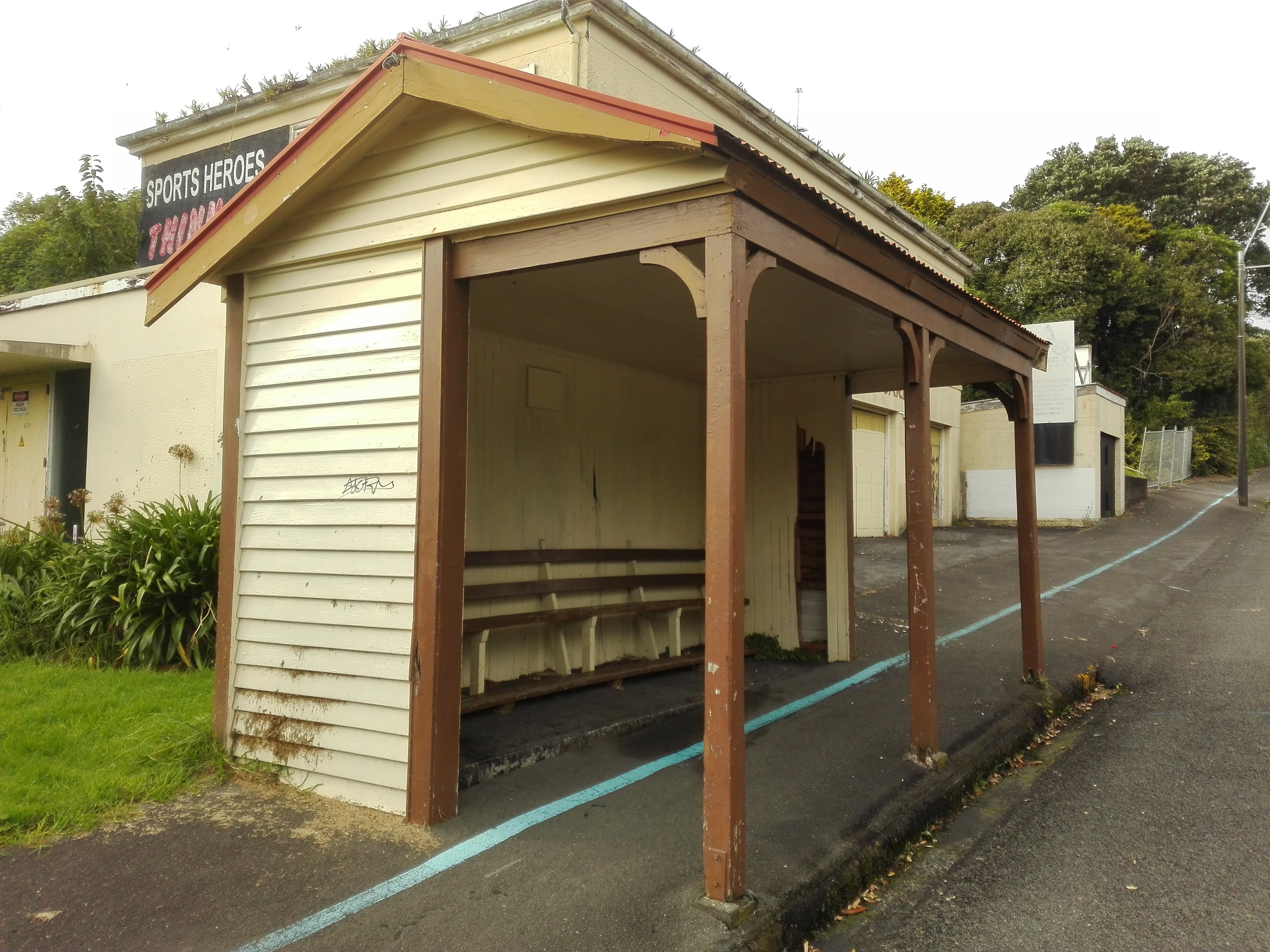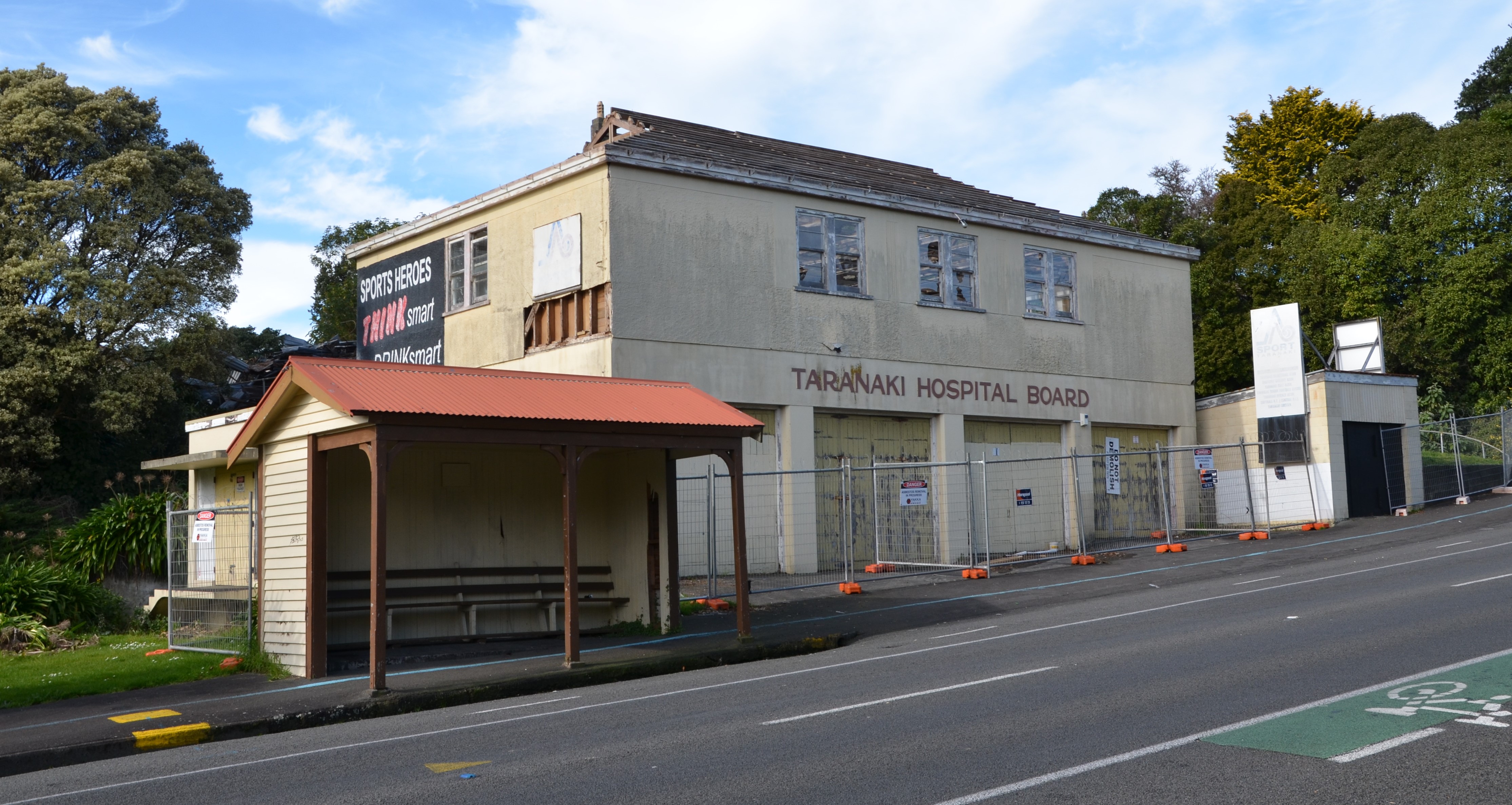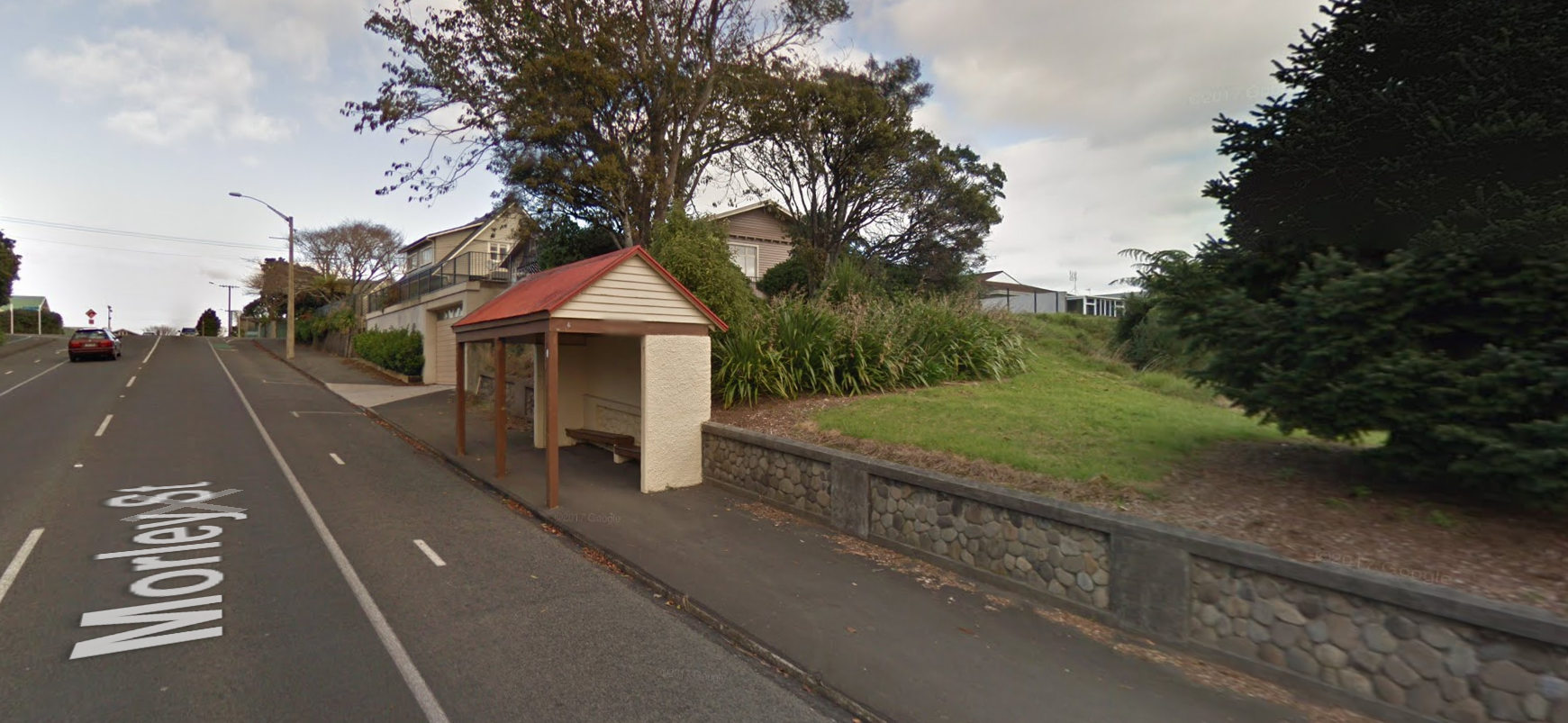





New Plymouth was serviced by a tram network from 1916-1954, a trolley bus network from 1950-1967, and throughout this period a mixture of battery and petrol/diesel buses were also used on routes where trams or trolley buses were not practical or viable - the first 'electric battery' bus in New Plymouth was introduced in 1917.
To provide protection for tram users, a number of shelters were built across the city. The Morley Street tram shelters are thought to have been constructed in the 1930s or 1940s to service the (old) New Plymouth Hospital following the completion of the new hospital wards and subsequent upgrade of the Morley Street entrance. Whilst the shelter on the eastern side of Morley Street (Westown-bound) is constructed of timber with a corrugated iron roof, the shelter on the western side of Morley Street (city-bound - demolished 2018), is partially constructed with reinforced concrete, and also incorporates a section of the Western Park retaining wall.
The shelters are not present in a 1923 photograph (or a 1930 photograph); however, they are clearly present in a 1949 Whites Aviation aerial photograph of New Plymouth Hospital. These are thought to be the only surviving tram shelters in New Plymouth.
Further info on surviving New Plymouth tram and trolleybuses: The body of one New Plymouth tram (Birney no. 3) survives in poor condition at Whanganui. Two New Plymouth trolleybuses survive (the only known surviving Crossley trollybuses worldwide): Crossley no. 1 is at the Wellington Tramway Museum at Paraparaumu where it is awaiting restoration, and Crossley no.3 is at Ferrymead Heritage Park in Christchurch where it is in working order. (2017)
Please do not reproduce these images without permission from Puke Ariki.
Contact us for more information or you can order images online here.